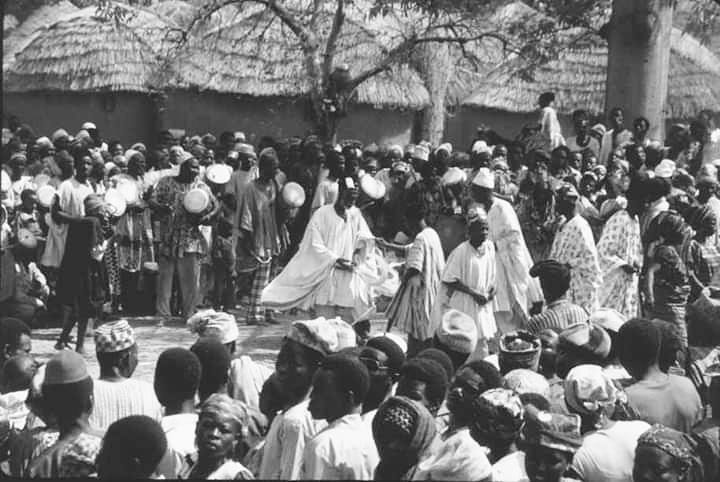The pre-colonial period in Ghana, also known as the prehistoric period, is the time period before the arrival of Europeans on the continent. During this time, Ghana was home to various indigenous groups that had developed their own cultures and societies.
One of the most notable pre-colonial societies in Ghana was the Ashanti Empire. The Ashanti Empire was established in the late 17th century and went on to become one of the most powerful and prosperous kingdoms in West Africa. The Ashanti were known for their skilled craftsmanship, advanced military tactics, and vibrant culture.
Prior to the Ashanti Empire, Ghana was home to several other kingdoms, including the Kingdom of Ghana, the Kingdom of Mali, and the Kingdom of Songhai. These kingdoms were known for their wealth, trade, and advanced systems of government.
In addition to these kingdoms, Ghana was also home to various nomadic groups, such as the Fulani and the Hausa. These groups were known for their pastoralism and trading activities, and they played an important role in the economy of the region.
During the pre-colonial period, trade was a vital component of the Ghanaian economy. Ghana’s location along the trans-Saharan trade route made it an important hub for the trade of gold, ivory, salt, and other goods. The Ashanti Empire, in particular, was known for its gold mines and skilled goldsmiths.
Religion was also an important aspect of Ghanaian society during the pre-colonial period. Many indigenous groups practiced traditional African religions, which involved the worship of deities and ancestors. Islam was also introduced to Ghana through the trans-Saharan trade route, and it became an important religion in the region.
The arrival of Europeans in the late 15th century marked the beginning of the end of the pre-colonial period in Ghana. Initially, Europeans established trading posts along the coast, but eventually, they began to expand their influence inland. This led to conflict with indigenous groups, as Europeans sought to establish control over land and resources.
In the 19th century, the British established control over the region that is now known as Ghana. They established a colony known as the Gold Coast, which they ruled until the country gained independence in 1957.
Today, Ghana is a vibrant and diverse country with a rich cultural heritage. The legacy of the pre-colonial period can be seen in the country’s art, music, and traditional practices. Many Ghanaians continue to practice traditional African religions, and the country’s cultural festivals and celebrations are an important part of national identity.
The pre-colonial period in Ghana was a time of great diversity and cultural richness, but it was also marked by conflict, exploitation, and slavery.
Here are some of the good, the bad, and the ugly aspects of the pre-colonial period in Ghana:
The Good:
- Wealth and Prosperity: The pre-colonial period in Ghana was characterized by trade and commerce, which brought wealth and prosperity to the region. The Ashanti Empire, in particular, was known for its gold mines and skilled goldsmiths, which made it one of the wealthiest and most powerful kingdoms in West Africa.
- Cultural Diversity: Ghana was home to a diverse array of indigenous groups, each with its own culture, language, and customs. This diversity created a rich tapestry of traditions and practices that continue to shape Ghanaian culture today.
- Art and Architecture: The pre-colonial period in Ghana was marked by skilled craftsmanship and advanced architectural designs. The Ashanti, for example, were known for their intricate beadwork and textiles, while the Kingdom of Mali was famous for its elaborate mosques and palaces.
The Bad
- Slavery and Exploitation: Despite the wealth and prosperity brought by trade, the pre-colonial period in Ghana was marked by the exploitation of people and resources. The trans-Saharan slave trade, in which Africans were sold to Europeans and Middle Easterners, was a significant part of the economy during this time.
- Conflict and Conquest: The pre-colonial period in Ghana was marked by conflict and conquest, as various kingdoms and nomadic groups vied for power and resources. This led to the rise and fall of several kingdoms, as well as the displacement and enslavement of many people.
- Lack of Gender Equality: Like many societies during this time, gender inequality was prevalent in Ghanaian society. Women were often excluded from political and economic power and were expected to fulfill traditional gender roles.
The Ugly:
- Human Sacrifice: Some indigenous groups in Ghana practiced human sacrifice as part of their religious beliefs. This barbaric practice involved the killing of human beings as an offering to the gods, and it was eventually outlawed by colonial authorities.
- Disease and Illness: The pre-colonial period in Ghana was marked by high rates of disease and illness. Malaria, yellow fever, and other diseases were prevalent, and the lack of medical knowledge and resources made these illnesses difficult to treat.
- Environmental Degradation: The exploitation of resources during this time led to environmental degradation and deforestation. This, in turn, led to soil erosion, loss of biodiversity, and other environmental problems that continue to impact Ghana today.
In sum, the pre-colonial period in Ghana was a time of great diversity and cultural richness. Indigenous groups developed their own societies, religions, and economies, while trade and commerce played a vital role in the region’s prosperity. The legacy of this period can still be seen in modern Ghanaian culture, and it serves as a reminder of the country’s rich history and heritage.
READ NEXT ON: Deportation of over a million Ghanaians from Nigeria in February 1983






































